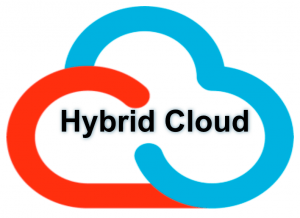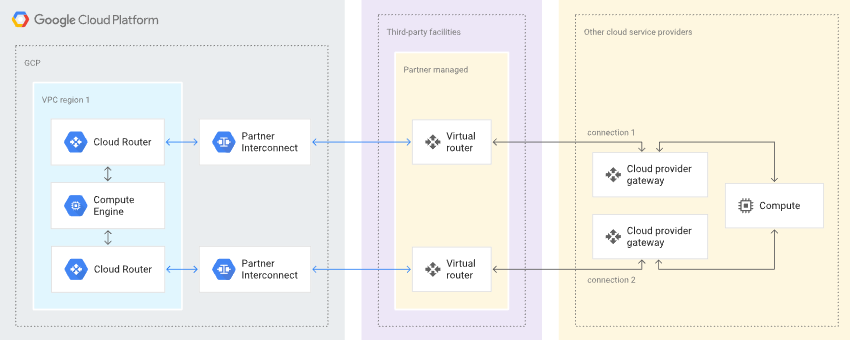A hybrid cloud strategy is becoming popular as organizations balance their need for scalability and flexibility with security and control of their data. As businesses increasingly rely on cloud computing to deliver services and store data, they are looking for ways to optimize their cloud usage while maintaining control over their critical assets. Most organizations believe that a hybrid cloud strategy allows organizations to leverage the best of both worlds by seamlessly integrating their on-premises infrastructure with cloud-based services
But what is a hybrid cloud strategy? Besides, how can you successfully implement it and what are the benefits? In this ultimate guide, we’ll dive into everything you need to know about hybrid cloud strategy, including its benefits, challenges, and best practices for implementation. Whether you’re considering a hybrid cloud approach or looking to optimize your existing strategy, this guide will provide the knowledge and tools you need to succeed in today’s cloud-driven business world.
What is a Hybrid Cloud Strategy?
Imagine you’re going on a road trip and you need a car that can handle different types of terrain. A sports car might be great on the highway, but it is not ideal for rough off-road terrain. On the other hand, an off-road vehicle can handle rugged terrain but might not be comfortable or efficient on the highway. A hybrid car combines the best of both worlds – it has an electric motor for efficiency and a gasoline engine for power when you need it. This way, you can switch between modes depending on your driving conditions and get the best of both worlds.
Similarly, a hybrid cloud strategy combines both public and private clouds. Public clouds are great for scalability, flexibility, and cost-effectiveness, while private clouds offer control, security, and compliance. By combining these two models, organizations can optimize their cloud usage and seamlessly integrate their on-premises infrastructure with cloud-based services. This allows them to balance their need for agility and innovation with their requirements for control and security.
How to Build a Hybrid Cloud Plan?
Building a hybrid cloud strategy in Google Cloud Platform (GCP) involves integrating GCP services with on-premises resources and other cloud providers to create a unified, hybrid cloud environment. Here are the key steps involved in building a hybrid cloud strategy in GCP
1. Assess business needs and requirements:
The first step in building a hybrid cloud strategy in GCP is to assess the business needs and requirements. To do this, organizations must evaluate their existing IT infrastructure and identify the workloads and data that needs integration into the hybrid cloud environment. Moreover, this involves understanding the business goals, objectives, and challenges, and how they relate to IT operations. Besides, it also involves identifying the workloads that will run in the hybrid cloud environment, as well as the data and services that needs integration with on-premises resources and other cloud providers. Organizations should also consider factors such as security, compliance, data privacy, and performance when assessing their business needs and requirements.
2. Evaluate GCP services:
Once the business identifies it needs and requirements, the next step is to evaluate GCP services that can build the hybrid cloud environment. Google Cloud Platform (GCP) provides a range of services that can be used to integrate on-premises resources with the cloud environment, making it easier for organizations to build a hybrid cloud strategy.
Virtual Private Network (VPN) is one of the GCP services that connects on-premises resources securely with GCP resources. GCP provides Cloud VPN that allows organizations to securely connect their on-premises resources with GCP resources over the internet. Hence, this service enables users to create an encrypted tunnel between the on-premises network and GCP resources, providing secure access to GCP resources.
Interconnects are another GCP service used to connect on-premises resources with GCP resources. GCP offers two types of interconnects:
- Dedicated Interconnect: is a GCP service that provides a dedicated physical connection between on-premises resources and GCP resources. This type of interconnect offers several benefits, including higher reliability, lower latency, and higher throughput compared to VPNs. With Dedicated Interconnect, organizations can transfer data between on-premises and GCP resources without going through the public internet, making it a more secure option. This type of interconnect is suitable for organizations that require high-speed data transfer and consistent network performance, such as those running large-scale data processing or analytics workloads.
- Partner Interconnect: is another GCP service that can be used to connect on-premises resources with GCP resources through a partner network. This type of interconnect offers several benefits, including lower costs and faster deployment times compared to Dedicated Interconnect. With Partner Interconnect, organizations can leverage the partner network’s existing infrastructure to establish a connection with GCP resources, reducing the need for dedicated infrastructure. This type of interconnect is suitable for organizations that have limited resources or want to establish a connection with GCP resources quickly.
Hybrid Cloud Storage Solutions are also available in GCP. These solutions allow organizations to store data on-premises and in the cloud environment simultaneously. One example of a hybrid cloud storage solution in GCP is Google Cloud Storage (GCS) which offers Nearline, Coldline and Archive storage classes used for backup, recovery and archiving.
3. Plan the network topology:
Similarly, after identifying of GCP services, the next step is to plan the network topology. This involves designing a network architecture that securely connects on-premises resources with GCP services and other cloud providers. The network topology should also take into account traffic flow, security, and availability. The steps involved in this process include:
Step 1: Define Network Requirements
The first step is to define the network requirements for the hybrid cloud architecture. In essence, this involves understanding the needs and requirements of the organization and the applications that will run on the network. This may include the number of users, the type of traffic that will run on the network, and the bandwidth requirements.
Step 2: Map the Network Topology
The next step is to map the network topology. In general, it involves creating a visual representation of the network, including the on-premises network and the GCP VPC network. Similarly, this map should include the location of firewalls, routers, switches, and other networking equipment.
Step 3: Define IP Addressing Scheme
Furthermore, we need to define the IP addressing scheme for the network. This involves defining the IP address ranges for the on-premises network and the GCP VPC network, as well as the subnets for each network.
Step 4: Choose Networking Components
The next step is to choose the networking components used in the network topology. In brief, this may include switches, routers, firewalls, load balancers, and VPN gateways.
Step 5: Design Network Segmentation
The next step is to design network segmentation. It occasionally involves dividing the network into logical segments to improve security and manageability. This may include creating separate segments for different departments or applications.
Step 6: Determine Network Security Controls
After that, we need to determine the network security controls used in the network. This may include firewalls, intrusion detection and prevention systems, and security information and event management systems.
Step 7: Plan for High Availability
The final step is to plan for high availability. This involves designing the network to be resilient and ensuring that there are no single points of failure. This may include implementing redundancy in network components and designing failover mechanisms.
4. Set up connectivity:
The other step is to set up connectivity between on-premises resources and GCP services. Moreover, this uses VPNs, interconnects, or hybrid cloud storage solutions. GCP offers several connectivity options, including Cloud VPN, Dedicated Interconnect, and Partner Interconnect.
How can we configure VPN Connections?
Setting up connectivity for VPNs in GCP involves several technical steps. Here’s a detailed explanation of the process:
Step 1: Configure Cloud VPN on GCP
The first step is to configure Cloud VPN on GCP. This involves creating a Virtual Private Cloud (VPC) network in GCP and configuring a Cloud VPN gateway. The Cloud VPN gateway acts as a virtual device that receives encrypted traffic from on-premises resources and sends it to the appropriate GCP resources.
Step 2: Configure the VPN Gateway
The next step is to configure the VPN gateway. This involves defining the IP address ranges for the on-premises network and the GCP VPC network. The VPN gateway also requires a shared secret for authentication and encryption of traffic between the on-premises network and the Cloud VPN gateway.
Step 3: Configure the On-Premises VPN Gateway
The third step is to configure the on-premises VPN gateway to establish a secure connection with the Cloud VPN gateway. This involves configuring the on-premises VPN gateway with the same shared secret used by the Cloud VPN gateway. The on-premises VPN gateway must also be configured with the IP address of the Cloud VPN gateway.
Step 4: Create a VPN Tunnel
The next step is to create a VPN tunnel between the on-premises VPN gateway and the Cloud VPN gateway. This involves configuring the routing between the on-premises network and the GCP VPC network.
Step 5: Test Connectivity
The final step is to test connectivity between the on-premises network and the GCP VPC network. This involves testing the connection by pinging resources on both sides of the VPN tunnel. It is also essential to ensure the traffic between the on-premises network and the GCP VPC network is encrypted and secure.
In the case of Dedicated Interconnects:
Setting up connectivity for Dedicated Interconnect in GCP involves several technical steps, including the need to have two connections instead of a single one like in the case of VPNs. Here’s a detailed explanation of the process:
Step 1: Choose a Partner
The first step is to choose a partner that provides Dedicated Interconnect services. GCP has a list of partners that provide Dedicated Interconnect services and can help organizations establish a dedicated physical connection between their on-premises and GCP resources.
Step 2: Choose the Appropriate Connection Type
Secondly, is to choose the appropriate connection type based on the organization’s needs and requirements. GCP offers two types of Dedicated Interconnect connections: 1 Gbps and 10 Gbps. The choice of connection type depends on the organization’s bandwidth requirements and budget.
Step 3: Order and Install the Interconnect
Another step is to order and install the Dedicated Interconnect. This involves working with the partner to order the appropriate Dedicated Interconnect service and coordinating the installation of the interconnect. Equally, the partner will provide the organization with the necessary hardware, such as routers and switches, to establish the connection.
Step 4: Configure the Interconnect
Fourthly, is to configure the Dedicated Interconnect. Generally, it involves configuring the routing between the on-premises network and the GCP VPC network. Unlike VPNs, which require only one connection, Dedicated Interconnect requires two connections for redundancy and high availability.
Step 5: Test Connectivity
The final step is to test connectivity between the on-premises network and the GCP VPC network. This involves testing the connection by pinging resources on both sides of the Dedicated Interconnect. It is also essential to ensure the traffic between the on-premises network and the GCP VPC network is encrypted and secure.
5. Deploy workloads:
Once connectivity is established, the next step is to deploy workloads in the hybrid cloud environment. Moreover, this involves creating virtual machines, containers, or serverless functions in GCP and integrating them with on-premises resources and other cloud providers. Deploying resources on GCP in a hybrid architecture with private subnets involves several technical steps. Here’s a detailed explanation of the process:
Step 1: Define the Network Architecture
The first step is to define the network architecture for the hybrid cloud environment. This involves deciding on the IP address ranges for the on-premises network and the GCP VPC network. It also involves deciding on the subnet mask for the private subnets and determining the routing between the on-premises network and the GCP VPC network.
Step 2: Create the VPC Network
The next step is to create the VPC network on GCP. This involves defining the IP address ranges for the VPC network and creating subnets for the private resources. It is important to ensure that the private subnets do not have a default internet gateway attached to them.
Step 3: Establish Connectivity
Thirdly, is to establish connectivity between the on-premises network and the GCP VPC network. This involves setting up a VPN or a Dedicated Interconnect connection. In a hybrid architecture with private subnets, it is recommended to use a VPN connection for secure connectivity.
Step 4: Deploy Resources
Even more, the next part is to deploy resources on the GCP VPC network. This involves creating virtual machines, load balancers, and other resources in the private subnets. It is important to ensure that the resources are deployed in the correct subnets and have the appropriate security settings.
Step 5: Configure Routing
The final step is to configure routing between the on-premises network and the GCP VPC network. This involves configuring the routing tables on the on-premises network and the GCP VPC network to ensure that traffic is routed correctly between the two networks.
6. Implement security and governance:
Security and governance are critical components of a hybrid cloud strategy in GCP. Notably, this involves implementing security measures, such as Identity and Access Management (IAM), security controls, and compliance policies, to protect data and workloads in the hybrid cloud environment. Once the hybrid cloud environment is deployed, it is essential to monitor and manage it to ensure that it is running smoothly and efficiently. This involves monitoring network traffic, performance, and availability, as well as optimizing costs and resources









